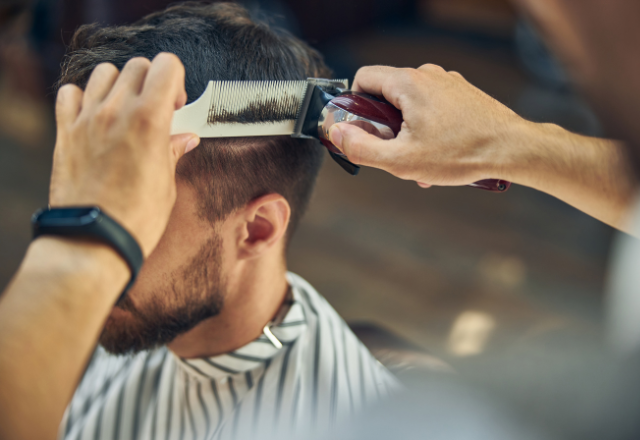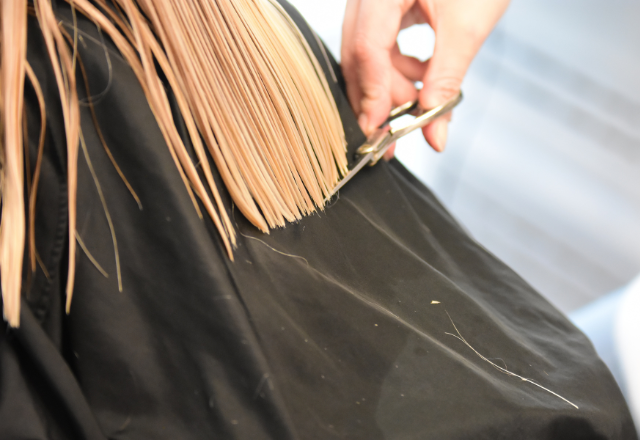No, cutting your hair does not make it grow faster. Hair growth starts at the scalp, not at the ends. Trimming your hair removes split ends and keeps hair looking healthier and thicker, which may give the illusion of faster growth, but it does not affect the actual rate at which hair grows. This is a common haircare myth that we’ll break down with facts and science. In this guide, we’ll also explore related questions to give you the full picture and provide tips to promote truly healthy hair growth.
Does Trimming Hair Make It Grow Faster?
Trimming hair does not increase the speed at which your hair grows. Hair grows from the follicle beneath the scalp, and no amount of trimming will change the biological process of cell generation within the follicle. While it may seem like hair grows faster after a cut, that’s usually because the ends are cleaner and the hair looks fuller and healthier.
Regular trimming helps you retain healthy hair, but it’s not a growth stimulant. It’s simply a maintenance step that contributes to the appearance of length and fullness.

Why Doesn’t Cutting Your Hair Make It Grow Faster?
Hair growth occurs beneath the scalp in the follicle, where new cells are produced and pushed outward to form the visible strand. Cutting the ends does not stimulate the follicle or influence its growth cycle. However, it helps prevent split ends and breakage, which can make your hair appear stagnant in length over time.
In fact, trimming damaged ends is essential to ensure the length you gain isn’t lost to breakage or split ends. It’s not about making the hair grow faster but rather creating the best conditions for retaining length over time.
How Often Should You Trim Your Hair?
The frequency of trimming depends on your hair type, condition, and style:
- Textured or curly hair: every 2–3 months
- Short hairstyles: every 3–4 weeks to maintain the shape
- Bobs and mid-lengths: every 6–8 weeks
- Long hair: every 10–12 weeks to prevent split ends
Even if you’re growing your hair out, skipping trims can lead to damage that slows your progress. Maintaining a trimming schedule tailored to your hair type ensures long-term growth and vitality. For more tips on maintaining a healthy routine, visit our men’s grooming tips guide.
What Does Cutting Your Hair Actually Do?
Trimming helps maintain hair health. It:
- Removes split ends
- Prevents breakage from traveling up the hair shaft
- Keeps styles looking clean and intentional
- Reduces tangling and frizz
- Helps products absorb more evenly across healthy ends
By consistently trimming, you allow your hair to retain its natural length by stopping damage before it worsens. It’s a proactive step in every healthy haircare regimen.

What Helps Hair Grow Faster?
While trims keep hair healthy, other factors influence the growth rate:
- Scalp massages: Boost blood flow to follicles
- Nutrient-rich diet: Include protein, biotin, zinc, and iron
- Stay hydrated: Essential for cellular function and hair health
- Gentle care: Use sulfate-free shampoo and avoid excessive heat styling
Avoid tight hairstyles that tug on the roots, and protect your hair from UV rays and pollution by using leave-in treatments or heat protectants. Explore our barbering tools to help build a professional-grade hair routine.
Does Cutting Hair Change Its Thickness?
Cutting your hair does not change its actual thickness or follicle density. However, a fresh cut can give the illusion of thickness by creating blunt, uniform ends. This look appears fuller and more voluminous.
If your ends are damaged, thin, or split, they can make your hair appear lifeless and sparse. A fresh cut gives hair a thicker, healthier look, especially when combined with nourishing products that support volume and shine.
Why Do People Think Hair Grows Faster After a Cut?
It’s all about perception. When your hair is trimmed, especially if it had split ends or thinning ends, it instantly looks shinier, healthier, and thicker. This improvement leads people to believe it’s growing faster, when in reality, it’s simply in better shape.
Additionally, when hair is regularly maintained, it’s less likely to break off, which can make it seem like you’re gaining length more quickly. The illusion of progress is often just good care in action.
Can Hair Health Impact Growth?
Yes, healthy hair can grow to longer lengths without breaking. While the growth rate itself remains steady, taking care of your scalp, limiting heat exposure, using the right products, and regular trims will help maximize your hair’s potential.
Stress management, restful sleep, and balanced hormones also play a major role in hair health. If you’re wondering how to choose a good barber, start with one who prioritises scalp care and personalised advice.
Common Myths About Hair Growth
- Myth: Frequent trims boost hair growth. Fact: They prevent breakage, not stimulate follicles.
- Myth: Hair grows faster in summer. Fact: Any difference is minimal and more related to lifestyle (like diet and sun exposure).
- Myth: Split ends can be repaired. Fact: They must be cut off. No product can permanently seal them.
- Myth: Brushing hair stimulates growth. Fact: Brushing can help distribute oils, but excessive brushing can lead to breakage.
How Long Does It Take Hair to Grow?
On average, hair grows about half an inch (1.25 cm) per month, which equals around 6 inches (15 cm) per year. This growth rate can be influenced slightly by genetics, diet, and overall health. However, no product or practice can dramatically speed up this natural process.
Final Verdict: Will Cutting Your Hair Make It Grow Faster?
No, cutting your hair does not make it grow faster. Hair grows from the scalp, and trimming only affects the hair shaft. However, it plays a crucial role in keeping your hair healthy, strong, and less prone to breakage, allowing you to maintain and grow out your length more effectively.
Want to learn more about professional haircare? Read about the history of barbering or discover our tips on how long it takes to become a barber.
For expert advice, visit:
Need a professional trim? Visit Barbertainer or book your appointment now.






